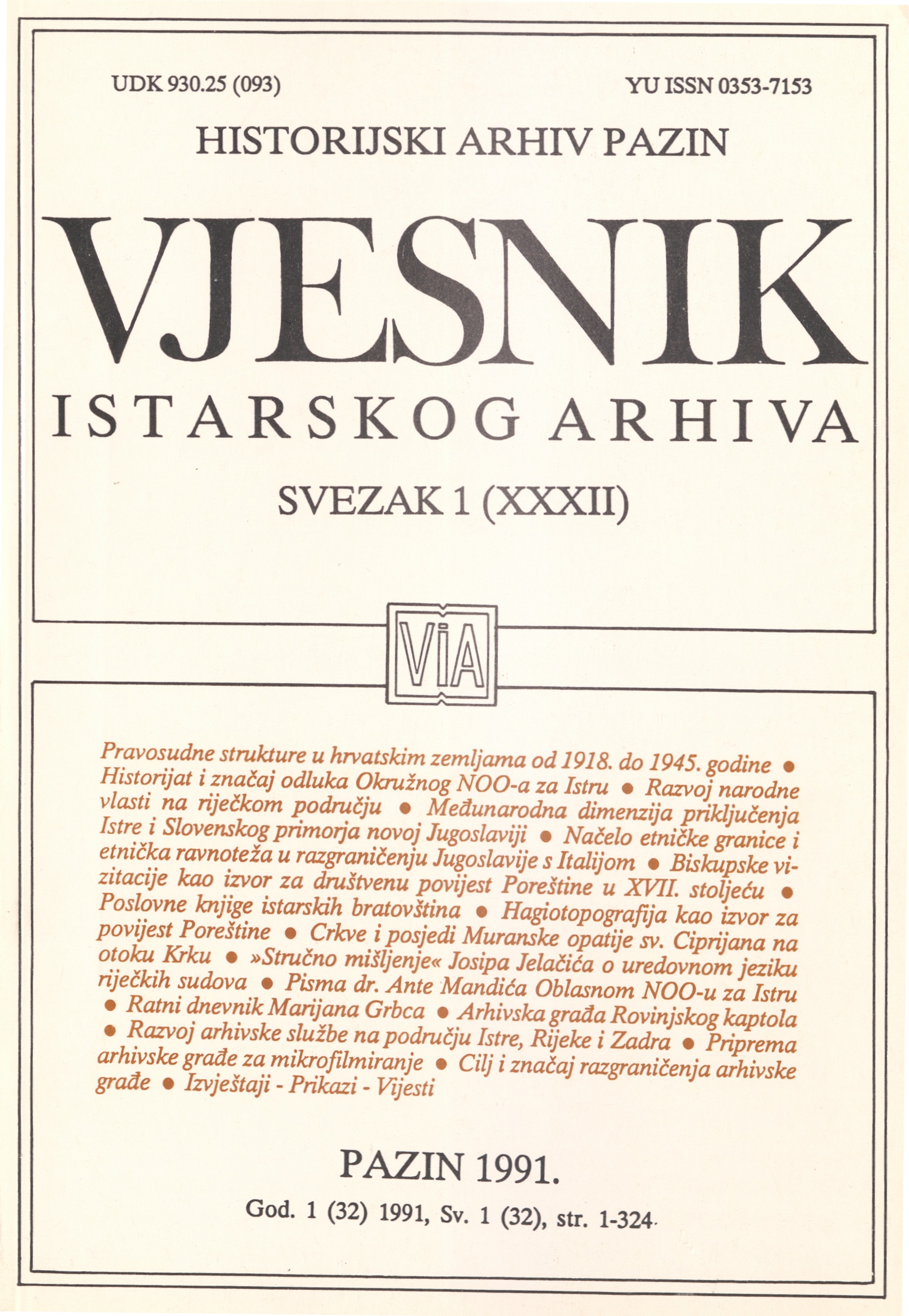Episcopal Visitations as a Source for Studying the Social History of the Poreč County in the 17th century
Abstract
On the example of 11 episcopal visitations within the Poreč Diocese in the 17th century the author illustrates the importance of such pastoral tours for the studies in social history, the analyses of the social phenomena that the »new historiography« tends to place into the focus of interest. These phenomena include the spiritual life of a region, its patterns of everyday existence, its beliefs, its way of living, its hidden conflicts and dramas. The questions asked by a visiting bishop, addressed to local priests, prefects, superintendants, judges and private citizens, give rise to a variety of answers and opinions, which together reflect the »mentality« of a subaltern rural community. The questions asked are more or less always the same: are there any »heretics«, offenders of moral and religious principles, sorcerers, false believers, usurers, blasphemers, etc? The author quotes some typical answers, those by the Beram parish priest Martin Milohanić, the Beram prefect Nikola Golubić (1603) and the dean of Dvigrad Bortol Visinada (1634). The scenes follow one after another in an uninterrupted series. Indeed, such visitations provide material for an excellent serial, in this case nearly a century of the spiritual life of 26 Istrian villages and towns. The author concentrates on only few details of this immensely rich material, such as several cases of »sorcerers«, a tiny minority of persons, who, like »heretics«, were most notorious. Also mentioned are cases of infanticide and premarital sex. As pointed out by the author himself, the work is a random choice of impressions and reflections rather than a completed study. As such it is primarily designed to encourage other historians and chroniclers to contribute to the historiography of Istria.
Downloads
Published
Issue
Section
License

This work is licensed under a Creative Commons Attribution-NonCommercial 4.0 International License.

